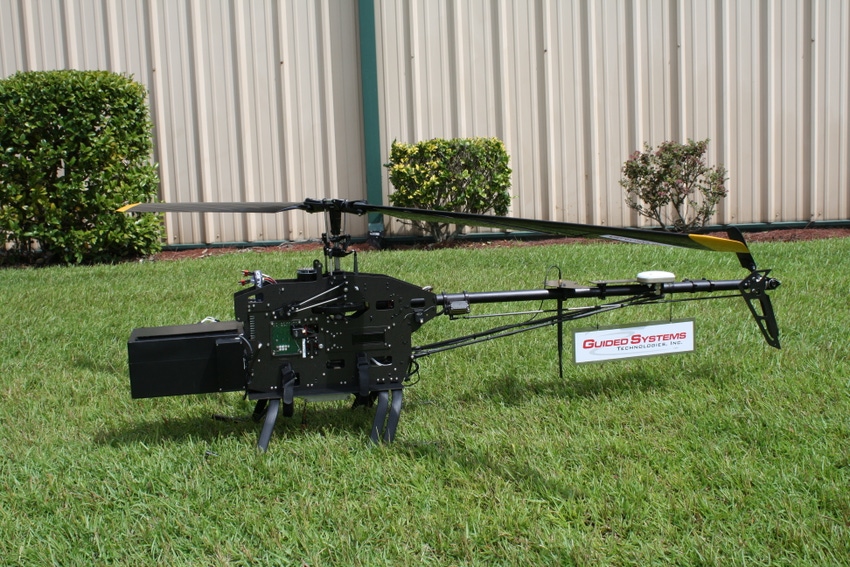August 11, 2014

A recent Federal Aviation Administration (FAA) ruling that governs the use of unmanned aircraft systems (UAS) or so-called drones in commercial agriculture is a setback for farmers and those whose research directly benefits farmers, says an Auburn University Extension specialist.
“At this time, farmers are unable to fly over crop fields or pastureland to capture pictures or video of anything they plan to sell commercially,” says John Fulton, Auburn University Extension precision agriculture specialist.
“For a majority of use on the farm and research, this means development and understanding of this technology must cease until the FAA provides updated guidelines. However, one is still able to fly as a hobbyist over their property. They can also take pictures of non-commercial items,” says Fulton.
The ruling, issued on July 3 by the FAA, states, “Farmers, ranchers and all commercial operators are prohibited from using UASs until the FAA institutes regulations for the safe integration of UASs into National Airspace. The FAA was given a deadline by Congress to allow commercial drone flights by September 2015. The Office of Inspector General released an audit this week that doubts the FAA will meet this deadline.”
“Overall, the ruling sets U.S. agriculture back and will put us behind on using this type technology to enhance the production of food and fiber,” says Fulton. “For Auburn University, we will be unable to develop the needed sensor systems and processing algorithms to better manage crops and inputs for our Alabama farmers. Essentially, we are grounded from crop research with UAS’s until they allow COAs to be established at universities for crop research. Again, this represents a setback to us and the education we can provide farmers and the ag industry on the beneficial uses of UAS’s in agriculture.”
A UAS demonstration that had been scheduled in a central Alabama farmer’s field on July 8 was cancelled shortly after the FAA ruling.
“At this time, it is difficult to know when researchers and the agriculture industry might be able to again fly over commercial crops and further develop the needed systems to support agriculture,” says Fulton.
The announcement, he says, was a surprise since the wording provided in the release differed from original interpretations that the agriculture industry had understood over the past couple of years.
“The agriculture industry needs these types of new technologies to fine-tune the management of crops, pastures and animals. The public expects farmers to manage in a sustainable manner while being environmental stewards, and these types of technologies provide the capability to support that expectation,” says the Extension specialist.
The ruling is limiting the advancement of Alabama farmers, Fulton says. “It is a detriment to the entire ag sector. I respect the FAA and its responsibility, but agriculture is trying to use this technology in a beneficial way; not misuse it. The FAA needs to quickly provide guidelines or a new ruling. It is interesting that one has the inability to capture valuable information, at low altitudes, on private farmland.”
Many farm uses for technology
The FAA ruling clarifies the difference between a hobby use and non-hobby use of unmanned aircraft systems or drones, says, R.J. Karney, rural development specialist for American Farm Bureau.
“If a farmer just wants to use an unmanned aircraft system to view crops or a field that their family is going to consume, they can utilize that technology. But if it is for a commercial farming operation – the farmer’s going to take that product and sell it to a consumer – then they can no longer utilize that technology according to the FAA, says Karney.
He says there are many practical on-farm uses for drones that would benefit farmers and ranchers.
“One of the primary uses will be for aerial photography. What a farmer can do is place an infrared camera on an unmanned aircraft system. The infrared technology will be able to check the crops for diseases that the farmer then can go and tackle at a quicker pace than having to walk the field,” says Karney.
The FAA is unlikely to meet the September 2015 for regulating commercial drone flights due to a lack of staff and funding, he adds, with the technology currently outpacing rules and regulations.
“Japan, for example, has been utilizing unmanned aircraft system for agriculture since the late 1980s, and we don’t want our farmers and ranchers to fall even further behind with the use of this technology,” says Karney.
In its ruling, the FAA makes a distinction between a hobby and non-hobby use of a UAS in farmer fields. Viewing a field to determine whether crops need water when they are grown for personal enjoyment is a hobby use, while determining whether crops need to be watered that are grown as part of commercial farming operation is a non-hobby use.
About the Author(s)
You May Also Like




